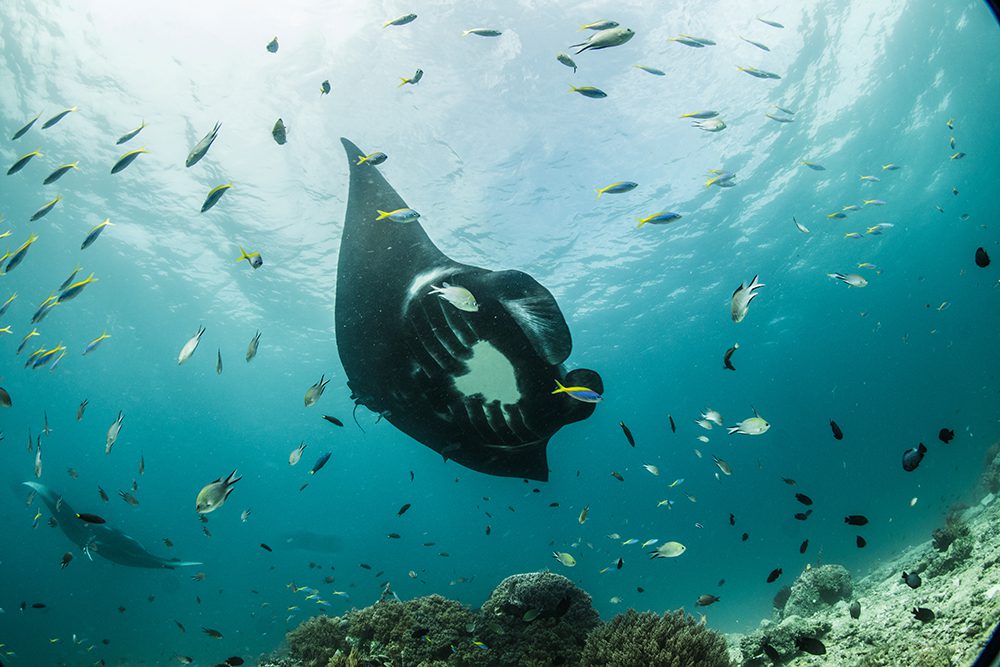Raja Ampat Survey Reveals New Species and Key Manta Ray Data by Johnny Langenheim
Note: This article originally appeared in The Guardian. All rights and photographs are reserved by the author and The Guardian.
Raja Ampat is the global epicentre of marine biodiversity – and the species count is still rising, thanks in large part to two scientists …

Gerry Allen, one of the world’s leading tropical fish Ichthyologists, logs data on gobi fish collected on a dive. ©Johnny Langenheim

Dr. Mark Erdmann, vice-president of Asia Pacific marine programs at Conservation International. Raja Ampat, Indonesia. ©Johnny Langenheim
I’m at five metres, clutching a rock outcrop on the seabed when the manta ray fixes me with its gaze. I’m free diving so there are no distracting bubbles – just the undulation of wings – four metres from tip to tip – as it passes close enough to touch, with a look that feels…nuanced. We stare at each other for a couple of moments before it wheels round, showing me a white belly scattered with dark spots and a couple of remora fish hitching a ride. Being that close to a manta is thrilling – but it’s the look that stays with me.

A reef manta surrounded by small reef fish, with two more mantas just visible in the background at a newly discovered manta cleaning station in Dayan, Raja Ampat. ©Johnny Langenheim
An archipelago of 1500 odd islands scattered over 40,000 square kilometres off the coast of West Papua, Indonesia, Raja Ampat is a great place to see manta rays – and indeed sea creatures in general. For one, these waters are home to more marine species than anywhere else on the planet: there are single reefs in Raja Ampat that contain more species than the entire Caribbean…
To read the entire article click here: Raja Ampat Survery…





































